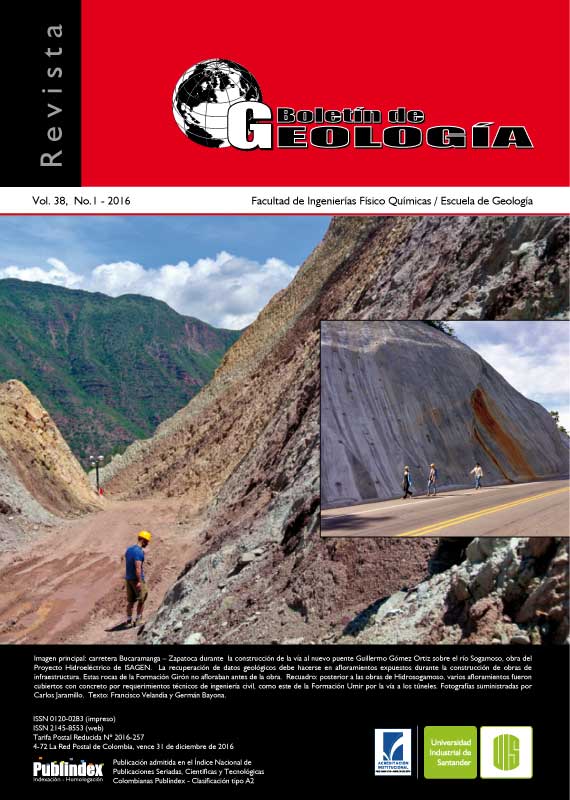ELECTRICAL RESISTIVITY TOMOGRAPHY APPLIED TO THE ANALYSIS OF ACTIVE FAULTS. CASE STUDY: ABRIAQUÍ FAULT, FRONTINO, ANTIOQUIA
Published 2015-12-07
Keywords
- Electrical resistivity tomography (ERT),
- Dipole-Dipole,
- Abriaquí Fault,
- least squares inversion method,
- active tectonics
How to Cite
Altmetrics
Abstract
Major active faults are affecting turbidite sequences of the Penderisco Formation in Northwestern Colombia, located along the axis of the Western Cordillera. Such faults are currently active and generate a high/moderate degree of seismic hazard in this region. In this work we use the electrical resistivity tomography method to evaluate its ability to delineate minor structures and to identify displaced blocks associated with the Abriaquí Fault. Electrical tests were carried out in a perpendicular direction to the Abriaqui Fault, obtaining tomographic images of electrical resistivity at two different locations using the Dipole-Dipole method. From the results we infer a high correspondence between the obtained spatial distribution of resistivity and the previous ideas of the underground configuration based on geomorphic and tectonic criteria. In particular, the inferred configuration of the Abriaquí Fault from electrical resistivity is highly consistent with the 2D models previously proposed.
